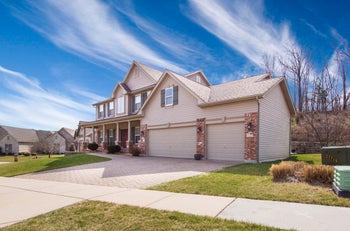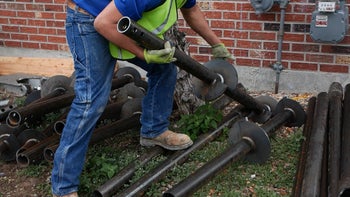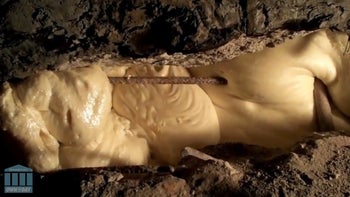Foundation Underpinning Repair Methods: What Every Homeowner Needs To Know
Table of Contents
1. What Is Foundation Underpinning?
2. What Types Of Problems Can Be Fixed Using Foundation Underpinning?
3. Foundation Underpinning Methods
4. How Do I Know If My House Needs Foundation Underpinning?
5. Common Signs Of Foundation Settlement That Could Make Foundation Underpinning Necessary
6. How To Prevent Foundation Damage
What Is Foundation Underpinning?

Foundation underpinning is a way of strengthening an existing foundation. Under pinning a foundation is performed when the foundation is failing in some way. For example, a foundation experiencing differential settlement that’s no longer able to support the structure built on top of it adequately is a prime candidate for underpinning. Underpinning will lift and stabilize the foundation.
Foundation underpinning transfers the building’s load to soil that can support it. This stops any settlement and stabilizes the structure. The most popular foundation underpinning methods for residential foundations are resistance piers, helical piers, and drilled concrete piers. We cover these in-depth below.
What Types Of Problems Can Be Fixed Using Foundation Underpinning?
A foundation repair contractor can solve the following problems via underpinning:
- Differential settlement. Various things can cause this.
- Foundations that have shifted laterally and settled because of soil creep. This often happens to homes built on hillsides.
- Foundations that have become unstable because of soil erosion.
- Foundations that are experiencing heave or subsidence.
- Underpinning a foundation can also strengthen foundations that will be supporting an increased load. For example, when adding a story to the building.
Foundation Underpinning Methods
The three most popular foundation underpinning methods for underpinning a house are resistance piers, helical piers, and drilled concrete piers.
Resistance Piers (also known as push piers)
Resistance piers are probably the most common way of repairing foundations experiencing settlement. The heavy-duty steel piers are driven into the ground until they hit load-bearing soil. Once the piers are anchored into the ground, they’re lifted hydraulically to raise the structure. Resistance piers are end-bearing and do not rely on skin friction to lift the foundation.
Helical Piers
Helical piers work in much the same way as resistance piers. However, their threaded shafts make them unique. They look something like giant corkscrews and are twisted rather than pushed into the ground. This unique shape gives them added stability for light structural loads.
Drilled Concrete Piers
To install these piers, the foundation repair contractor drills a hole for each pier, places a set of bundled steel reinforcement bars into the hole, and fills the hole with concrete. The contractor then attaches hydraulic jacks to the piers and uses them to lift the foundation. After the foundation has been lifted, spacers stabilize the foundation in place of the jacks.
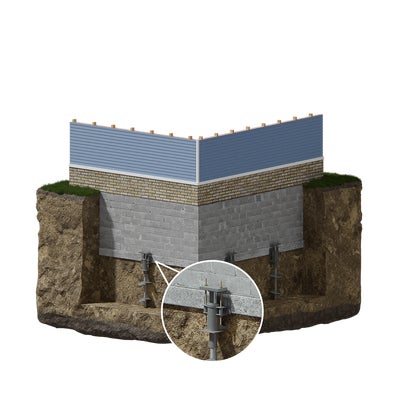

How Do I Know If My House Needs Foundation Underpinning?
The only way to know for sure if your house needs underpinning is to have either a foundation repair contractor or a structural engineer perform an inspection. They will consider the type of damage, the cause, whether it’s severe, and if the problem can even be repaired via foundation underpinning.
Most foundation repair contractors will perform the inspection for free, discuss with you the types of underpinning available, and offer an estimate. However, some homeowners worry that an unscrupulous contractor will recommend an unnecessary repair. If you’re worried about this, you can pay a structural engineer to perform the inspection and then write up a report that you can give to the repair contractor.
Common Signs Of Foundation Settlement That Could Make Foundation Underpinning Necessary
Here are some common signs of foundation settlement to watch for:
- Sticking windows or doors. Also, windows or doors that don’t close or lock properly. Sometimes foundation settlement will prevent the locking mechanism from lining up correctly.
- Sunken, sloped, or bowed floors. Watch out for floors that are uneven or warped in some way.
- Floors and ceilings that have separated from the wall. These might not be large, easily noticeable gaps. Even slight separations should get your attention.
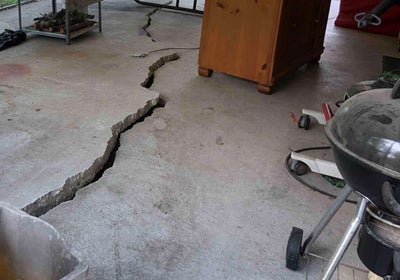
- Floor cracks. Be on the lookout for cracks that run wall to wall in a straight line. Floor cracks that are limited to one or two tiles were probably caused when someone dropped something on them.
- Bowed or cracked interior or exterior walls. Sometimes a wall is both cracked and bowed.
- Torn wallpaper. This might have happened because the wall behind the wallpaper cracked.
- Wall rotation. This can happen when the soil on the outside edge of your foundation gets oversaturated with water that can’t drain off. The outside edge of the foundation sinks while the inside edge – which isn’t in water-saturated soil – pulls up. This causes the wall to rotate.
- Diagonal cracks that run from the corners of windows and doors up to the ceiling. Very thin, hairline cracks might not be anything to worry about. However, large cracks of this type could be a sign of foundation damage.
- Moldings that are no longer in contact with the wall and/or ceiling. This happens when things aren’t moving in sync.
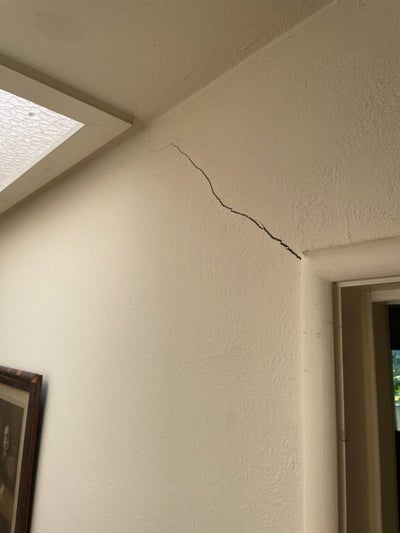
- Stair step cracks in brickwork. This is almost always a sign of foundation trouble.
- Chimneys or porches that have separated from the house. Although this might be a problem with the foundation under the chimney or porch, it’s a good idea to have it checked out. Make sure it isn’t a problem with your home’s foundation.
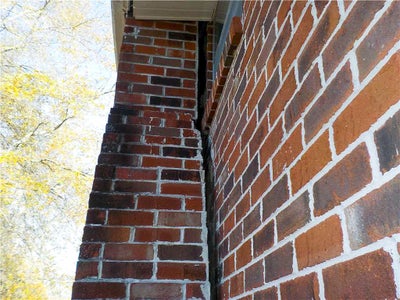
How To Prevent Foundation Damage
Since water causes most foundation problems, you can prevent foundation damage by ensuring the soil around your home’s foundation has good drainage and stays relatively dry. In most cases, this is surprisingly easy to do:
- Don’t plan vegetation that needs a lot of water near your home. Those flowers and shrubs might look pretty next to your house, but if they need a lot of water, you’re going to have problems.
- If your yard doesn’t slope away from your home, get it regraded. A yard that slopes away from a structure allows water to drain away from the foundation. You don’t want water flowing toward your foundation because it will sink into the ground and saturate the soil. Both foundation repair contractors and landscapers can regrade your yard. Regrading your yard might be an excellent DIY project.
- Clean your gutters regularly. Clogged gutters can cause rainwater to spill over the side of your house and down into the soil next to the foundation.
- Add downspout extensions, if necessary. Downspouts that are too short dump water next to the foundation, where it will then sink into the soil. Extensions take that water and deposit it away from your foundation.
Learn more about – DIY Foundation Repairs
Foundation underpinning can be expensive, especially if your home has significant structural damage. Therefore, it’s best to spot foundation issues early before they turn into big problems that will cost you an arm and a leg to repair.
If you’re in our service area in northern California, contact us for a free inspection and estimate.
More Resources
Publish Date:
Last Modified Date:

Our Locations
2333 Courage Dr. Suite C
Fairfield, CA 94533
1161 N Fair Oaks Ave
Sunnyvale, CA 94089

